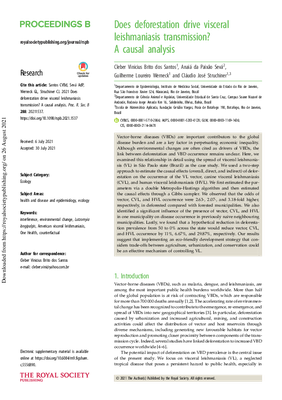Does deforestation drive visceral leishmaniasis transmission? A casual analysis
Vector-borne diseases (VBDs) are important contributors to the global disease burden and are a key factor in perpetuating economic inequality. Although environmental changes are often cited as drivers of VBDs, the link between deforestation and VBD occurrence remains unclear. Here, we examined this relationship in detail using the spread of visceral leishmaniasis (VL) in São Paulo state (Brazil) as the case study.
https://biodiversitylinks.org/learning-evidence/one-health-evidence/one-health-evidence-inbox/does-deforestation-drive-visceral-leishmaniasis-transmission_-a-causal-analysis.pdf/view
https://biodiversitylinks.org/learning-evidence/one-health-evidence/one-health-evidence-inbox/does-deforestation-drive-visceral-leishmaniasis-transmission_-a-causal-analysis.pdf/@@download/image/image.png
File
Does deforestation drive visceral leishmaniasis transmission? A casual analysis
Author(s):
Cleber Santos
,
Anaiá Da Paixão Sevá
Publication Date: 2021
DOWNLOAD FILE
Vector-borne diseases (VBDs) are important contributors to the global disease burden and are a key factor in perpetuating economic inequality. Although environmental changes are often cited as drivers of VBDs, the link between deforestation and VBD occurrence remains unclear. Here, we examined this relationship in detail using the spread of visceral leishmaniasis (VL) in São Paulo state (Brazil) as the case study.



